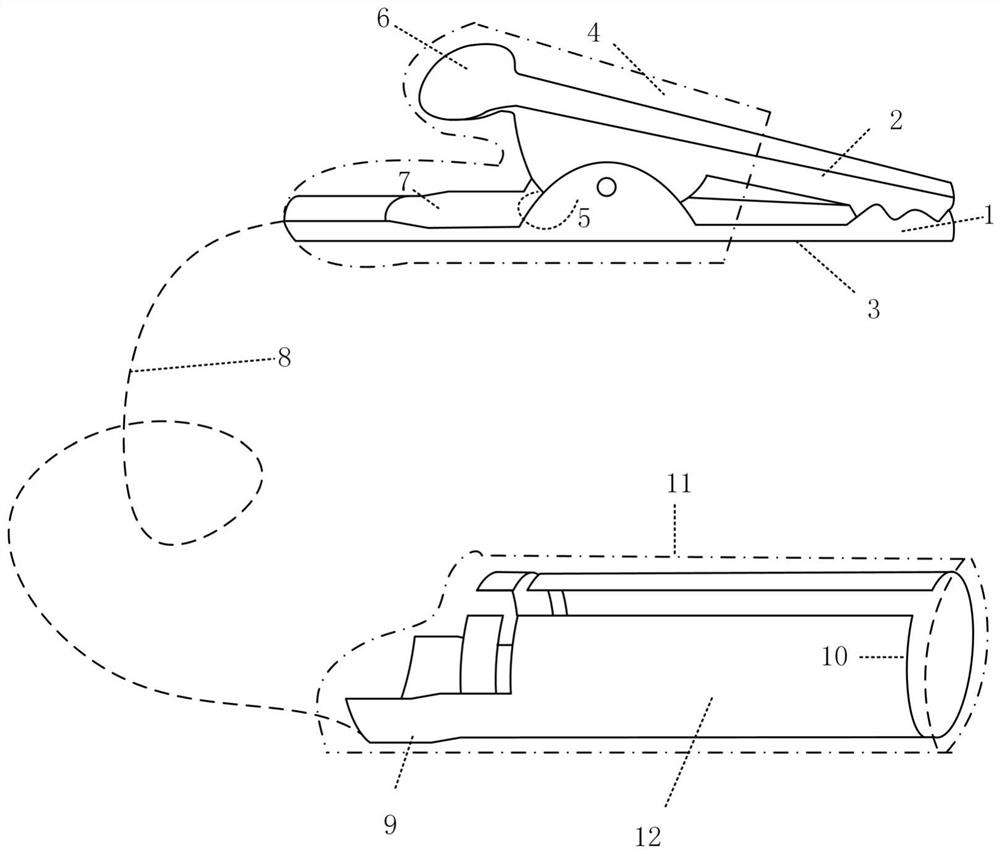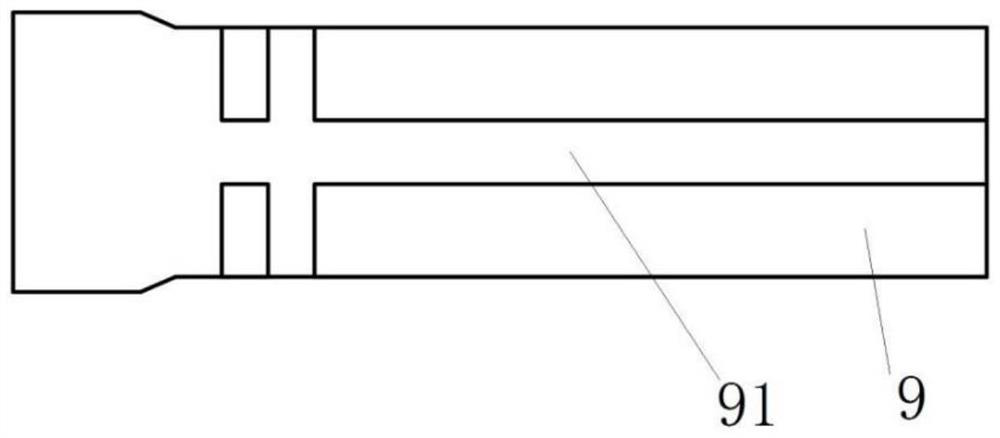Lead electrode connecting device for experimental animal electrocardiogram
An experimental animal and connecting device technology, applied in the fields of medical science, diagnosis, diagnostic recording/measurement, etc., can solve the problems of unstable electrode needle fixation, difficulty in measuring chest leads, interference of ECG signals, etc. The effect of signal acquisition quality, convenient and fast operation, and accurate ECG data
- Summary
- Abstract
- Description
- Claims
- Application Information
AI Technical Summary
Problems solved by technology
Method used
Image
Examples
Embodiment 1
[0039] Such as figure 1 As shown in -3, a lead electrode connection device for an experimental animal electrocardiogram, including an electrode clip 1 and a groove 12 connected to both ends of a wire 8;
[0040] The electrode clamp 1 includes an upper clamp body 2 and a lower clamp body 3 connected by a connecting shaft 5. The head ends of the two clamp bodies fit together to form a clamp, and the tail ends are separated from each other to form a hand-held part. There is a protrusion inside the clamp. The insulating layer 4 covers the area other than the jaw (that is, the connecting shaft 5, the tail end 6 of the upper clamp body and the tail end 7 of the lower clamp body wrap the insulating layer);
[0041] In this example, if figure 1 As shown, the protrusion is a gentle protrusion of any shape such as a blunt circle, an arc or a hemisphere, so as to prevent sharp objects such as electrode needles from causing harm to experimental animals and operators.
[0042] In this em...
PUM
 Login to View More
Login to View More Abstract
Description
Claims
Application Information
 Login to View More
Login to View More - R&D
- Intellectual Property
- Life Sciences
- Materials
- Tech Scout
- Unparalleled Data Quality
- Higher Quality Content
- 60% Fewer Hallucinations
Browse by: Latest US Patents, China's latest patents, Technical Efficacy Thesaurus, Application Domain, Technology Topic, Popular Technical Reports.
© 2025 PatSnap. All rights reserved.Legal|Privacy policy|Modern Slavery Act Transparency Statement|Sitemap|About US| Contact US: help@patsnap.com



